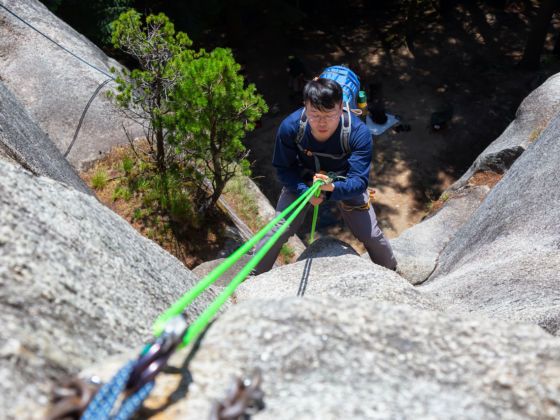I HAD NO HARNESS, no shoes, and no rope of my own. I was shown how to tie a swiss seat, how to clip into the rope, and what commands to say to my partner. A pair of aqua blue climbing shoes that were two sizes too big were handed to me.
It was basic and simple that first day climbing. Now when I set out the door to the rocks, be it for wall climbing, sport climbing, or bouldering, I’ve a bag of gear, food, and water that I always bring with me. For those looking to get into climbing on rocks, getting started can be simple with a little guidance on what you need and where to get it.
I recommend that anyone interested in learning how to rock climb sign-up for a beginner class at a local climbing gym or outdoor gear shop or guide school. There are some techniques and skills that are needed in order to rock climb safely.
